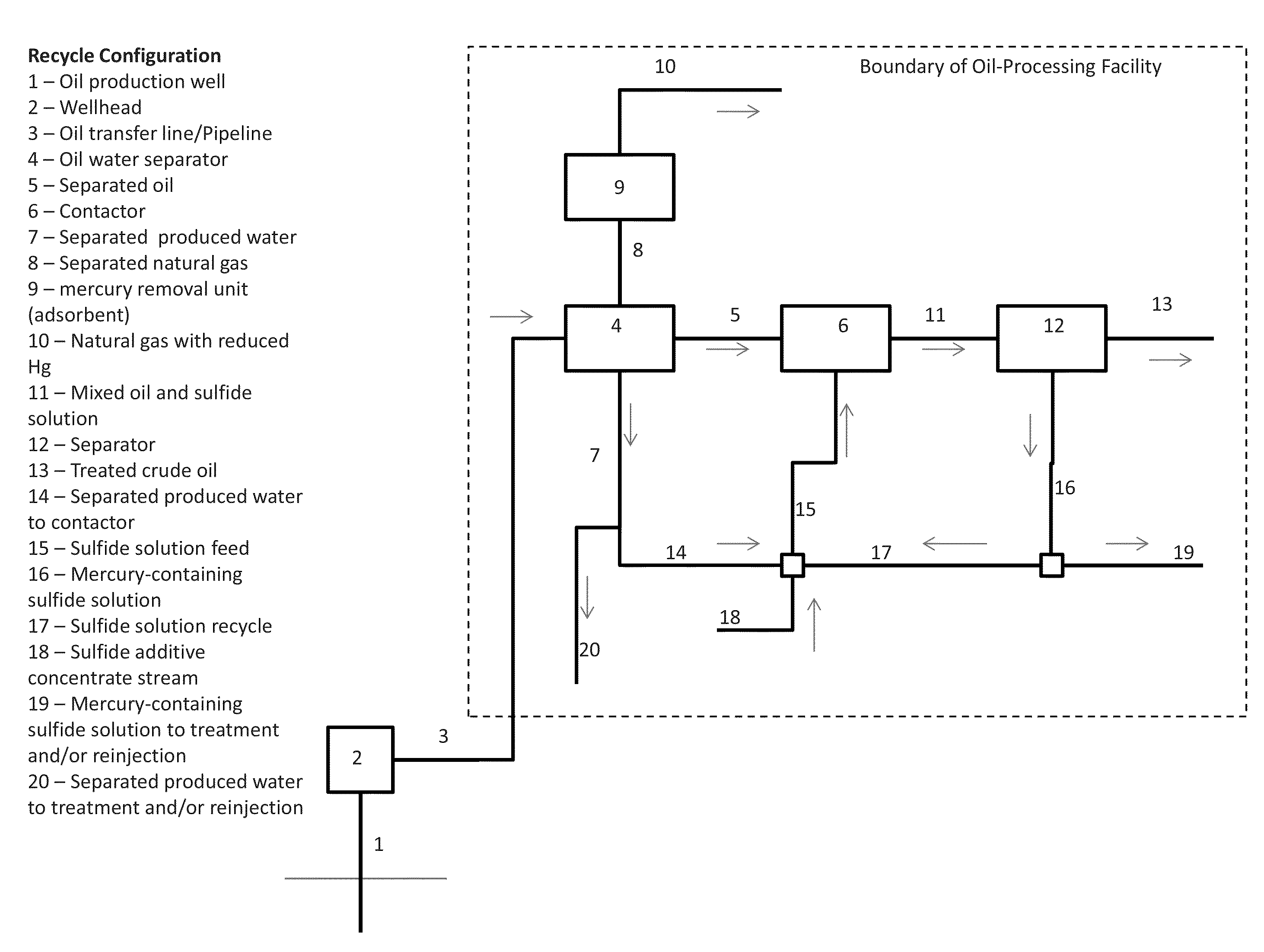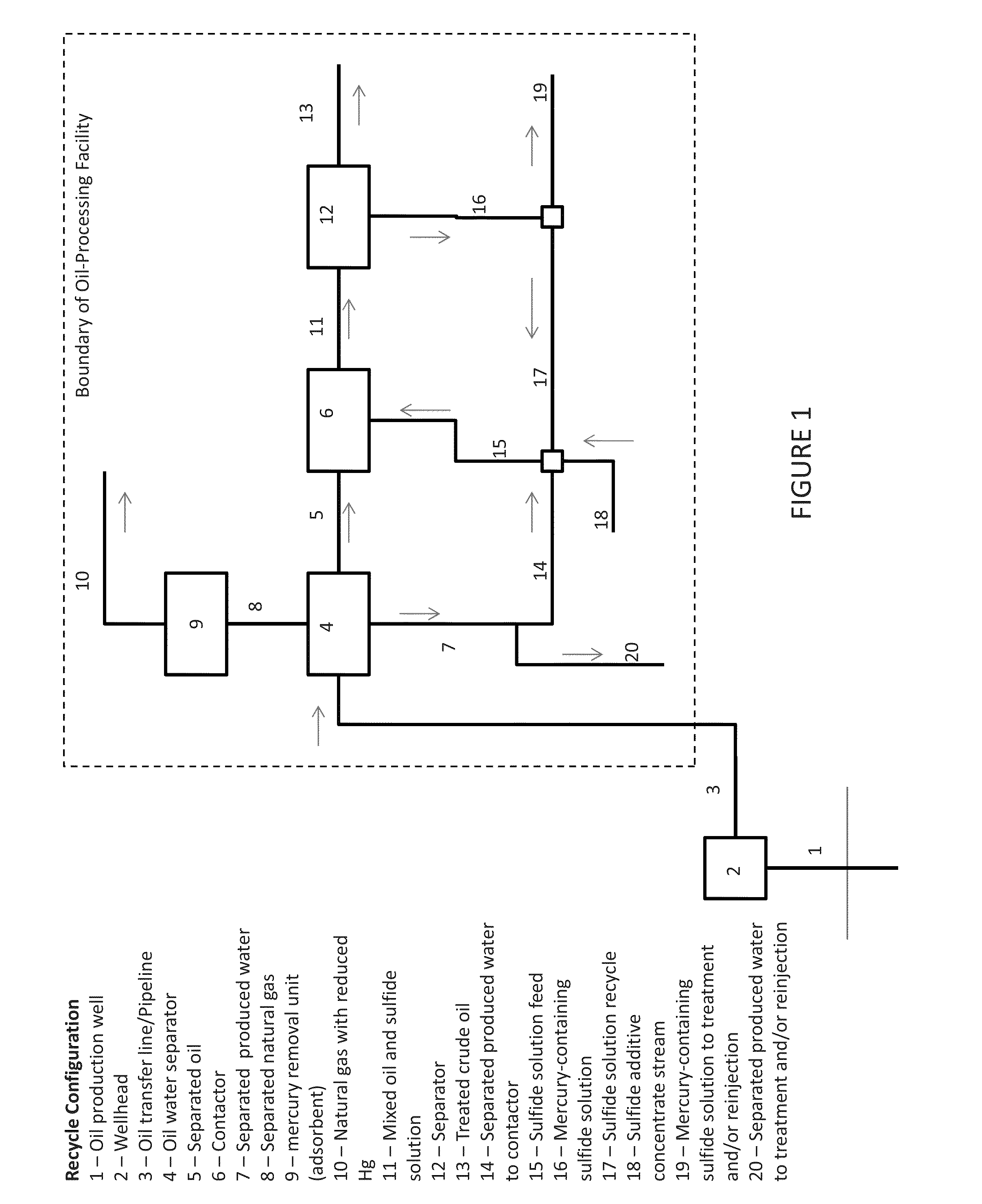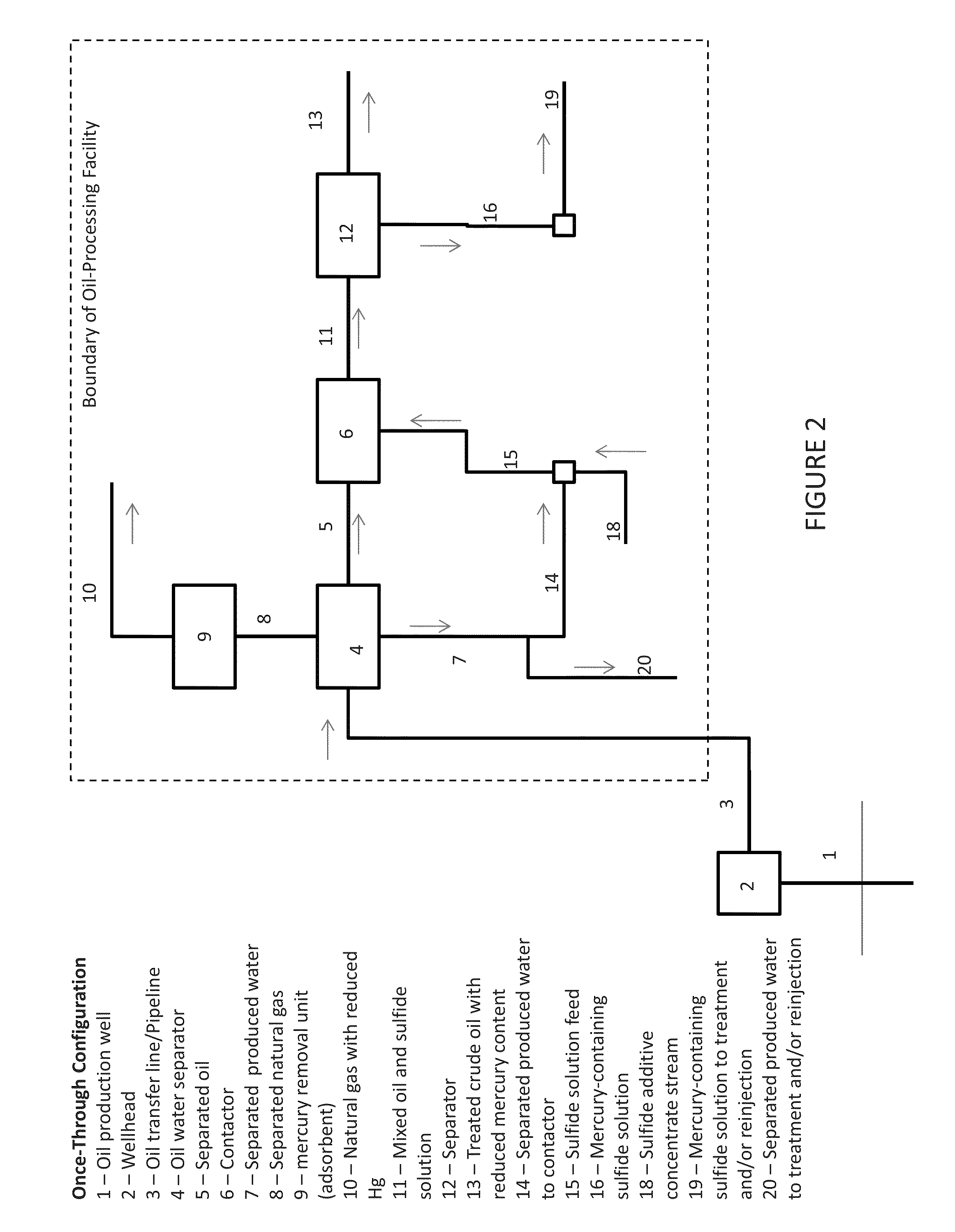Process, method, and system for removing mercury from fluids
a technology of hydrocarbon fluids and mercury, which is applied in the direction of separation processes, dispersed particle separation, and wellbore/well accessories, etc., can solve the problems of crude oil adsorption technology not working well and condensates with low mercury levels
- Summary
- Abstract
- Description
- Claims
- Application Information
AI Technical Summary
Benefits of technology
Problems solved by technology
Method used
Image
Examples
example 1
[0058]In this example, a sample of volatile Hg0 in simulated crude was prepared. First, five grams of elemental mercury Hg0 was placed in an impinger at 100° C. and 0.625 SCF / min of nitrogen gas was passed over through the impinger to form an Hg-saturated nitrogen gas stream. This gas stream was then bubbled through 3123 pounds of Supurla® white oil held at 60-70° C. in an agitated vessel. The operation continued for 55 hours until the mercury level in the white oil reached 500 ppbw. The simulated material was drummed and stored.
example 2
[0059]The example illustrates the stripping of volatile elemental Hg from a crude. First, 75 ml of the simulated crude from Example 1 was placed in a 100 ml graduated cylinder and sparged with 300 ml / min of nitrogen at room temperature. The simulated crude had been stored for an extended period of time, e.g., months, and its initial value of mercury had decreased to about 375 ppbw due to vaporization (at time 0). The mercury in this simulated crude was rapidly stripped consistent with the known behavior of elemental Hg, as shown in Table 1, and contained little or any non-volatile (particulate) mercury. The effective level of mercury at 60 minutes and onward is essentially 0 as the detection limit of the mercury analyzed used for this test was 50 ppbw
TABLE 1Time, minMercury, ppbw 03691027420216301634099505660738044100 38120 11140 25Pct Volatile Hg80
example 3
[0060]The example illustrates the removal of mercury from a crude oil sample containing volatile mercury with a sulfur compound in the prior art, Na2Sn with n>=2. The crude oil prepared in Example 1 was mixed with aqueous sodium polysulfide in a stirred batch reactor for 90 minutes after initially purging the reactor with nitrogen to remove oxygen. The ratio of oil volume to total volume of liquid in the reactor was 0.5, and concentration of sodium polysulfide in the aqueous phase was 1 wt %, equivalent to 0.57 wt. % sulfur. The mercury concentrations in the oil and aqueous phases were measured. Table 2 shows the mass fraction of mercury remaining in the oil and mercury extracted to the aqueous phase over time, with greater than 90% of the mercury content in the oil was extracted to the aqueous phase. Centrifugation of the aqueous phase after separation from the oil layer did not reduce the mercury concentration, showing that the mercury extracted into water is a dissolved compound,...
PUM
| Property | Measurement | Unit |
|---|---|---|
| pour point | aaaaa | aaaaa |
| pour point | aaaaa | aaaaa |
| temperature | aaaaa | aaaaa |
Abstract
Description
Claims
Application Information
 Login to View More
Login to View More - R&D
- Intellectual Property
- Life Sciences
- Materials
- Tech Scout
- Unparalleled Data Quality
- Higher Quality Content
- 60% Fewer Hallucinations
Browse by: Latest US Patents, China's latest patents, Technical Efficacy Thesaurus, Application Domain, Technology Topic, Popular Technical Reports.
© 2025 PatSnap. All rights reserved.Legal|Privacy policy|Modern Slavery Act Transparency Statement|Sitemap|About US| Contact US: help@patsnap.com



